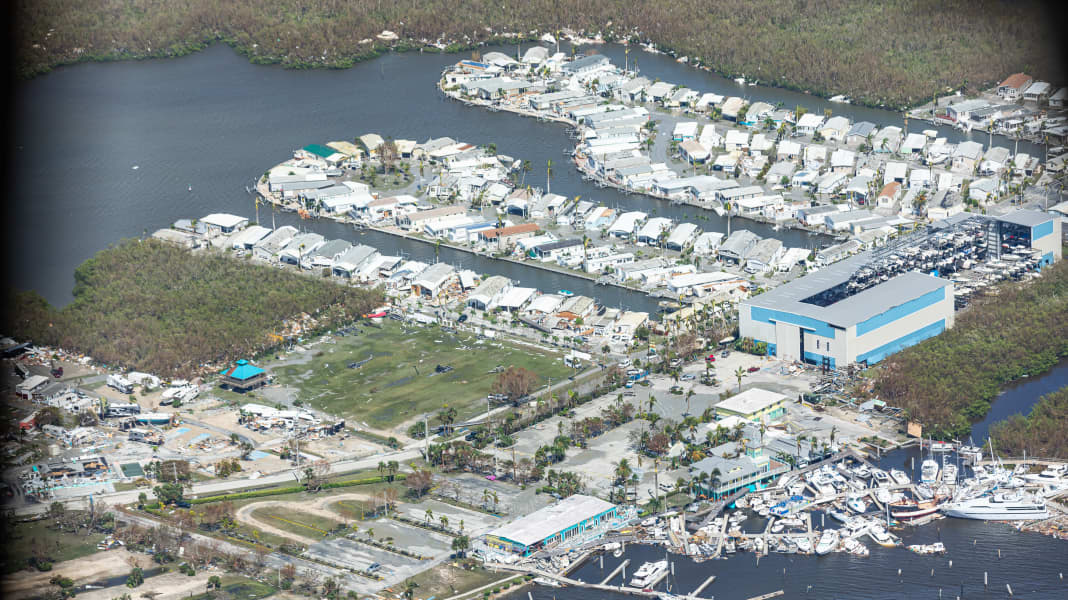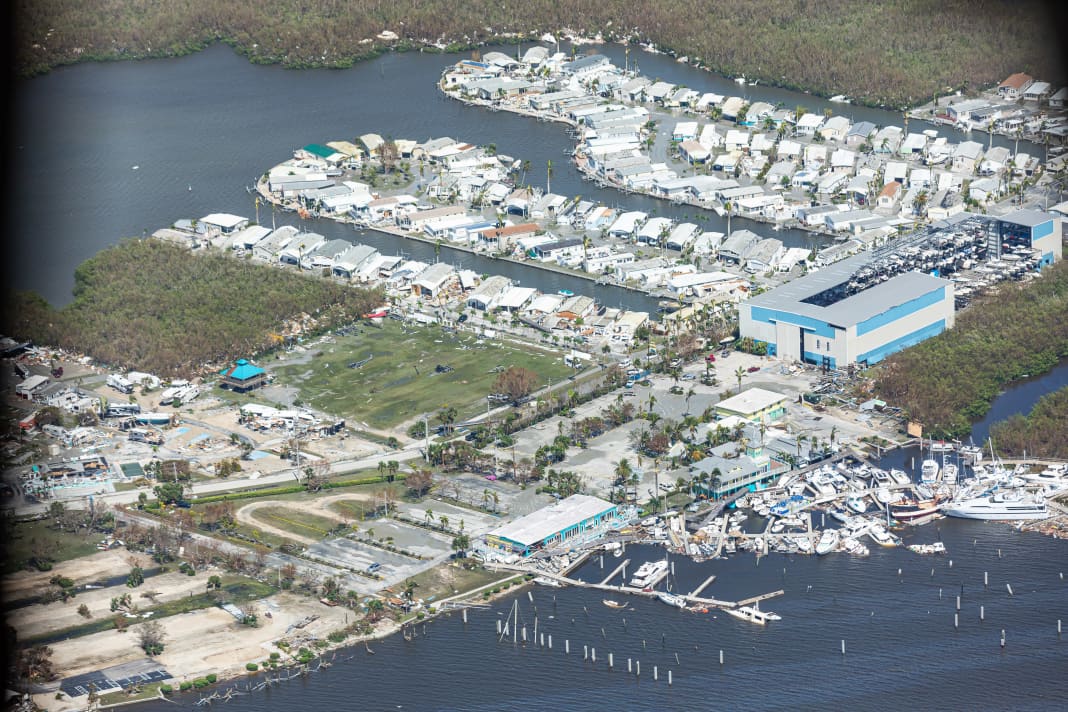Hurricane "Ian": Trail of devastation in marinas - how can blue water crews protect their yachts?
Andreas Fritsch
· 04.10.2022

The traces of devastation, especially in Fort Myers, are devastating. "Ian" tore entire jetties from their moorings and washed some of them deep inland, where the boats were smashed, sank or stranded after the water receded. Yachts parked on land and supposedly hurricane-proof moorings were torn apart. The category 4 (out of 5) hurricane hit the US state with full force, and the severe flooding in particular caused enormous damage, killing more than 100 people.
The images of the lost boats will probably make any owner with long-distance or at least Caribbean ambitions sit up and take notice. How do you actually get your own boat safely through the hurricane season if there is no time to sail it back to Europe before it starts? Many crews dream of the big "Atlantic round trip", i.e. first across the Atlantic with the ARC in November, then a season in the Caribbean and back via North America and the Azores before the hurricane season. What many people underestimate: The return journey is significantly longer than the southern Atlantic crossing and is often more challenging in terms of weather. In addition, after an Atlantic crossing and an entire Caribbean season, the boat must be carefully and completely serviced before the next Atlantic crossing. Problems are often found that are not so easy to fix in the Caribbean. Or the crews start too late.
YACHT asked Holger Flindt, head of the claims department at German insurer Pantaenius, how crews who want to or have to stay in the Caribbean prepare.
"If you want to take your own yacht to the Caribbean, you first have to inform the insurer that the sailing area is being extended. Most ships are only insured for Europe; worldwide travel has to be taken out separately." This is significantly more expensive, with the policy costing around three times as much. But that doesn't mean that the boat can stay in the Caribbean during the hurricane season without any further precautions.






Kats are no longer insurable in the water during hurricane season
"Unfortunately, the major damage events of recent years have shown that the risk has increased even further. We therefore have to impose conditions on owners if they want to leave their boat in the Caribbean during this time." The surprising thing is that catamarans lying in the water can no longer be insured during the hurricane season. "It has simply turned out that the boats cannot survive a hurricane while afloat due to the large wind attack surface. This is why catamarans can only be insured standing upright on land and if they are firmly anchored to the deck in a frame.
"The problem is the rigs," says Flindt. "Most boats are parked with the mast upright. In storms, this then causes so much vibration that the earth fixings are shaken out and the boat topples over," says the damage expert. Category 4 or 5 storms are often accompanied by flying debris or floating debris, as is now the case in Florida.
Monohulls can still be insured while lying in the water, but only if they are also moored according to very special specifications. The boats must lie alone in a double box, be double moored and completely fenced off. The location of the boat must also be clarified with the insurer and the securing documented before the owner can take the risk, as not all areas of the Caribbean are equally at risk.
In Florida, Pantaenius got off lightly this time, in stark contrast to Hurricane Irma in 2017, which devastated St Martin and the BVIs. "So far, we haven't had any reported damage from German owners; the part of the country that was hit hardest was the west side of Florida, where Europeans rarely sail."
